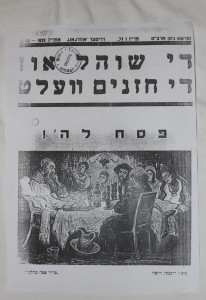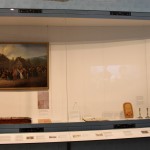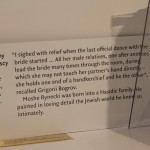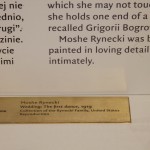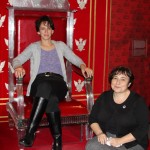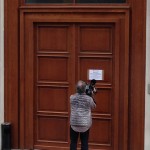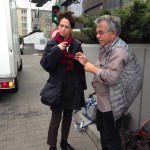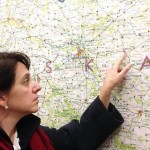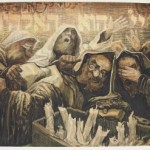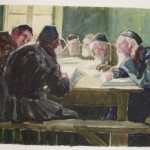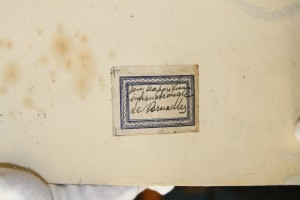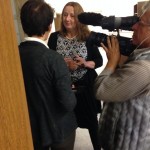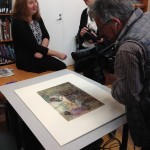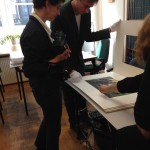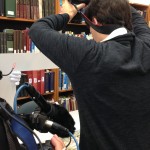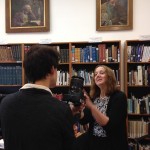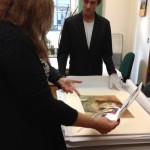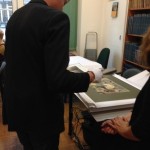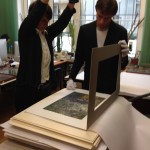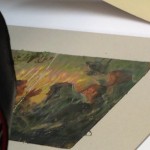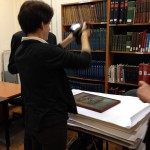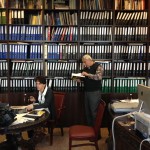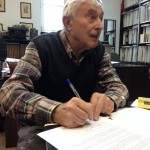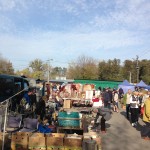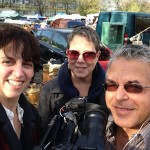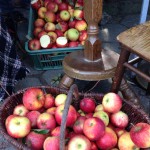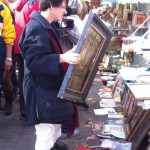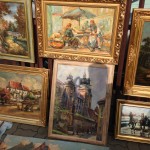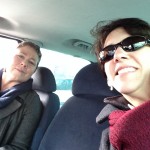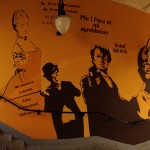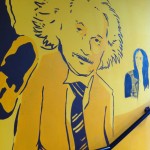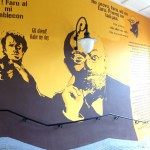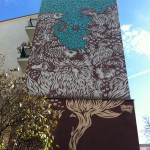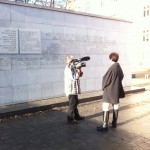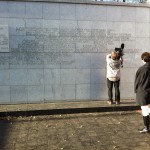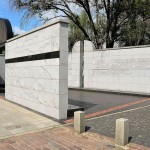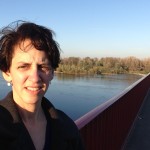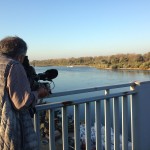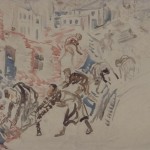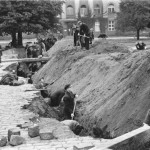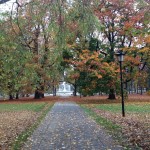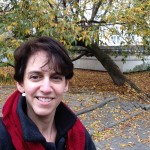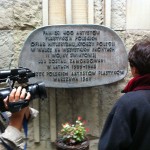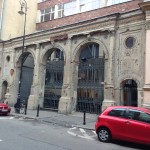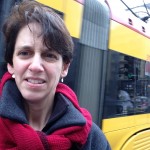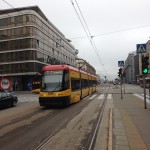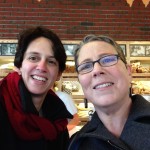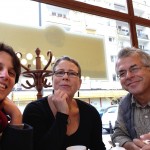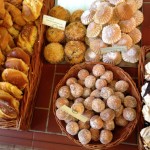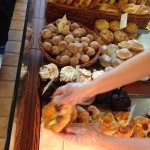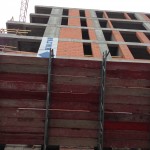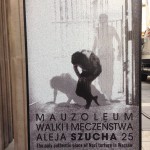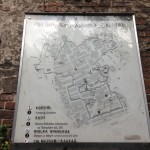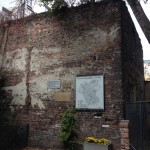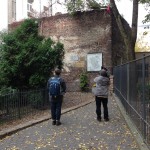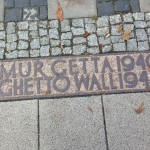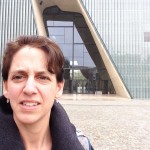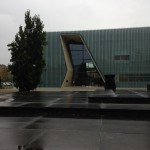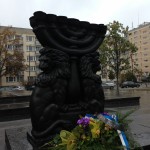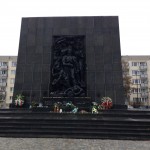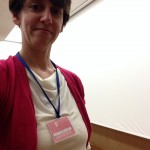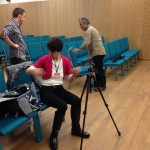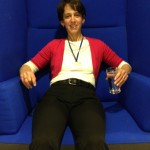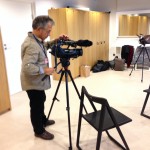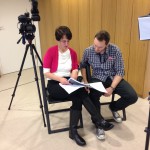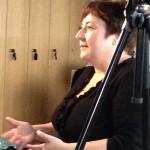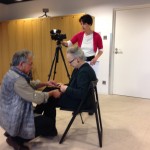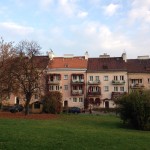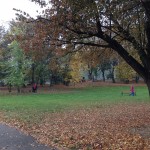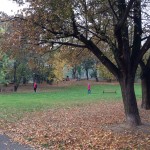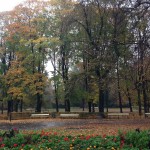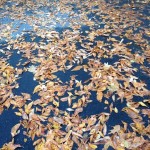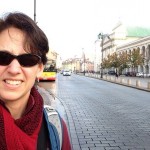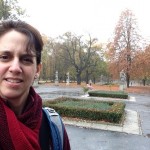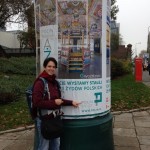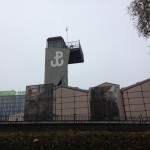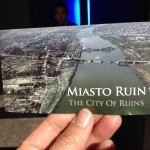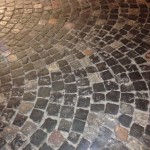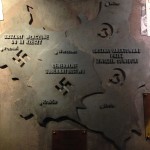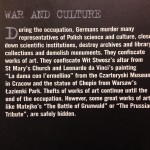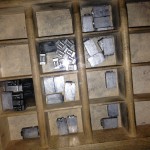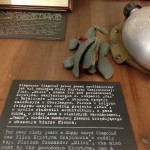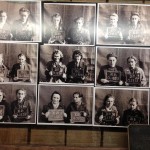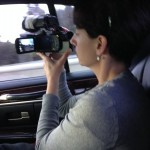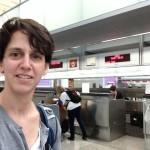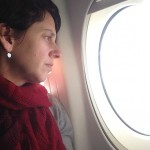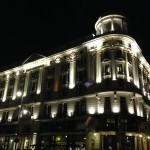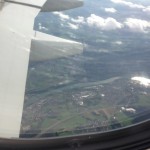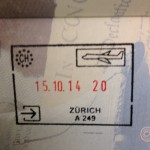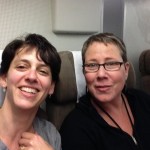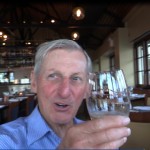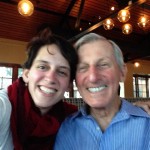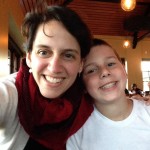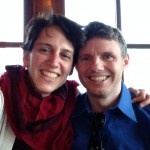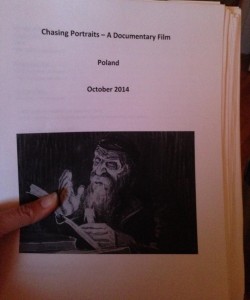I have now been in Warsaw for about a week, and I am super excited about all the filming we’ve been able to do so far! We’ve had fabulous interviews, looked at original Moshe Rynecki paintings, and filmed at locations that hold significance and meaning to my family’s pre-war and wartime story. The days are long, and then the nights are a bit longer still because Cathy and I come back to our apartment and, a la Hollywood style, review the dailies. Living in the moment is one thing, but knowing you caught a great expression or a wonderful statement means you KNOW you’ve got a great film. We are getting there!
For Tuesday 21 October, first on our agenda was a return visit the Jewish Historical Institute (ZIH) to see the 8 paintings in restoration being prepared for the opening of the exhibition: SALVAGED. A Collection of paintings, drawings and  sculpture from the holdings of the Jewish Historical Institute. The exhibit itself is not yet up, but I’m hoping for a sneak peak of the exhibit before I return to the States. In the meantime, I got to take a look at the Rynecki paintings they are thinking of including, one of which is a self-portrait of my great-grandfather. I love this painting! He painted himself in a contemplative pose, holding his head in his hand (something I do quite often when I’m at my desk!), he’s not dressed in traditional Jewish clothing (instead he’s wearing a button down shirt and a tie), and in the background and around the edges he’s used pinks and purples to frame the portrait. I asked if it might be possible for me to put on gloves and pick up the painting. To my surprise and delight I was told, “yes, yes, of course.”
sculpture from the holdings of the Jewish Historical Institute. The exhibit itself is not yet up, but I’m hoping for a sneak peak of the exhibit before I return to the States. In the meantime, I got to take a look at the Rynecki paintings they are thinking of including, one of which is a self-portrait of my great-grandfather. I love this painting! He painted himself in a contemplative pose, holding his head in his hand (something I do quite often when I’m at my desk!), he’s not dressed in traditional Jewish clothing (instead he’s wearing a button down shirt and a tie), and in the background and around the edges he’s used pinks and purples to frame the portrait. I asked if it might be possible for me to put on gloves and pick up the painting. To my surprise and delight I was told, “yes, yes, of course.”
There are a LOT of really great moments in each day of this Warsaw trip, but this particular one is special and I will treasure it for a very long time. The moment was caught on film by my lovely and fabulous cameraman, Slawomir Grunberg, and captured in this behind-the-scenes shot by Catherine Greenblatt who wears many, many hats on the Chasing Portraits docfilm production team including working a second camera, taking stills, helping me to do interview prep work, cross checking historical information, and much, much more.
 At four o’clock we were to join a two hour tour of Polin: The Museum of the History of the Polish Jews. We did, and the tour guide was great, but what I really want to share are some documents Renata Piątkowska, who once worked at the Jewish Historical Institute, but is now at Polin, recently discove
At four o’clock we were to join a two hour tour of Polin: The Museum of the History of the Polish Jews. We did, and the tour guide was great, but what I really want to share are some documents Renata Piątkowska, who once worked at the Jewish Historical Institute, but is now at Polin, recently discove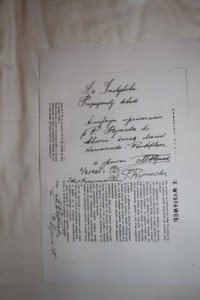 red while doing some archival research. The first document here is an application Moshe Rynecki made in 1934/1935 to to the Institute of Propaganda (which should be read not with a negative English language connotation, but is more about the promotion of the arts) to have two paintings included and sold at in a Salon (an exhibition). On the application you can even see the price he is asking for each of the works: I think it says 74 złotyand 150 złoty. Clearly the paintings haven’t sold because on the back of the document is a handwritten note from Moshe Rynecki indicating that the organizationis to please give the Rynecki paintings to his wife, Perla Rynecka.
red while doing some archival research. The first document here is an application Moshe Rynecki made in 1934/1935 to to the Institute of Propaganda (which should be read not with a negative English language connotation, but is more about the promotion of the arts) to have two paintings included and sold at in a Salon (an exhibition). On the application you can even see the price he is asking for each of the works: I think it says 74 złotyand 150 złoty. Clearly the paintings haven’t sold because on the back of the document is a handwritten note from Moshe Rynecki indicating that the organizationis to please give the Rynecki paintings to his wife, Perla Rynecka.
The other very exciting document Renata brought me is the cover of a magazine made for cantors. On the cover is a Rynecki painting showing the scene of a Passover Seder. You can see the Haggadah, the stack of matzah, and it looks like the youngest at the table is asking the four questions. The big mystery now is, did this piece survive the war, and if so, who has it?
And then it was onto the museum tour. This new Museum of the History of the Polish Jews is a massive exhibition space with an incredibly ambitious plan to show a 1000 years of Polish Jewish History. Our guide was great at highlighting the importance of each room and of pointing out some of the more unique objects on display. My favorite room, of course, is the one of Jewish life because it is the case where the photographic print of a Moshe Rynecki painting will be displayed. This is the case where it will hang [presently the big white spot!] along with the text to be included:
And last, but not least, a photograph of myself with Renata at a King’s chair in an earlier part of the exhibition. Even serious days need some whimsy.
